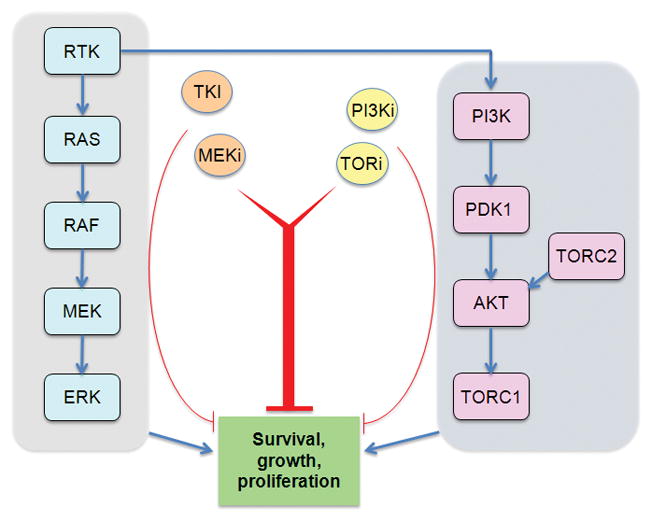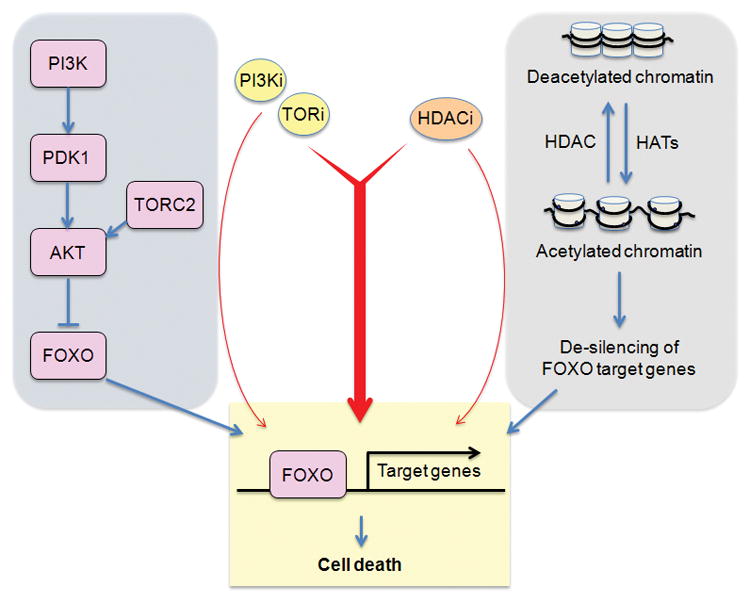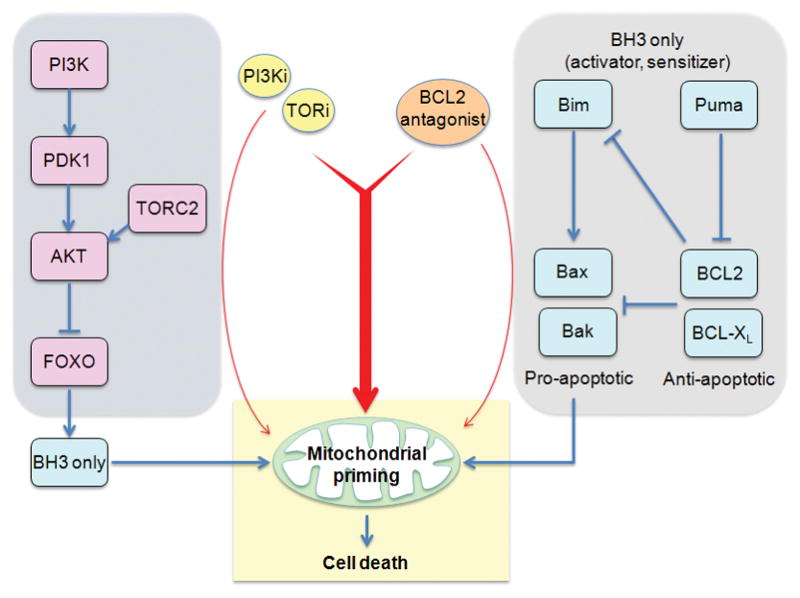Figure 1.



Pharmacological strategies to overcome resistance to apoptosis in cancer cells treated with PI3K/mTOR inhibitors. (A) Many tumor cells have activated receptor tyrosine kinases (RTKs), or cytoplasmic tyrosine kinases, and/or activation of the RAS/RAF/MEK/ERK pathway. Combining TKIs or MEK inhibitors with PI3K/mTOR inhibitors can induce cancer cell death. (B) Pro-apoptotic genes are often silenced epigenetically in tumor cells. HDAC inhibition leads to increased histone acetylation and more open chromatin state at gene regulatory elements. PI3K/mTOR inhibition triggers nuclear accumulation of FOXO transcription factors, which can access pro-apoptotic gene promoters when cells are treated with HDAC inhibitors. (C) Low mitochondrial priming is a significant barrier to apoptotic induction in some cancer cells. BCL2 antagonists can increase priming and lower the threshold for apoptotic induction by PI3K/mTOR inhibitors.
